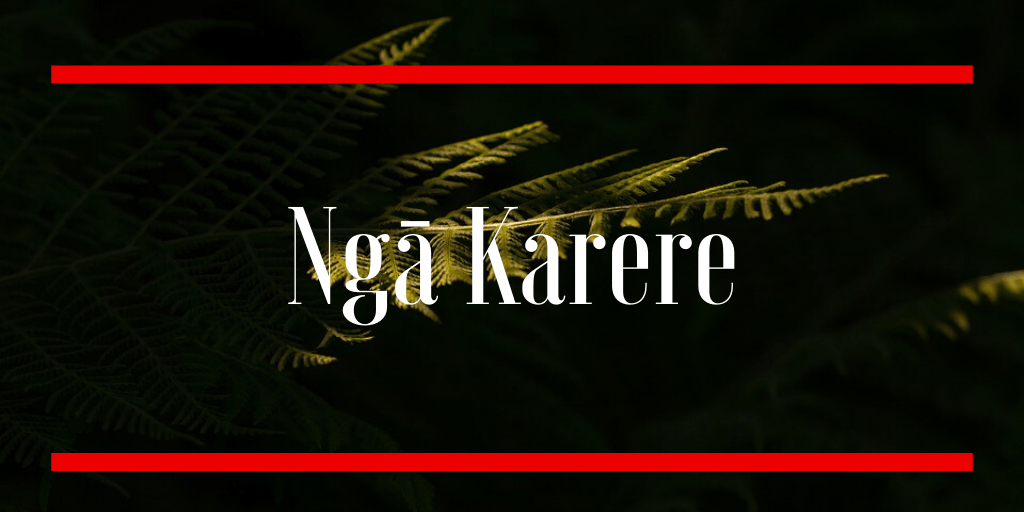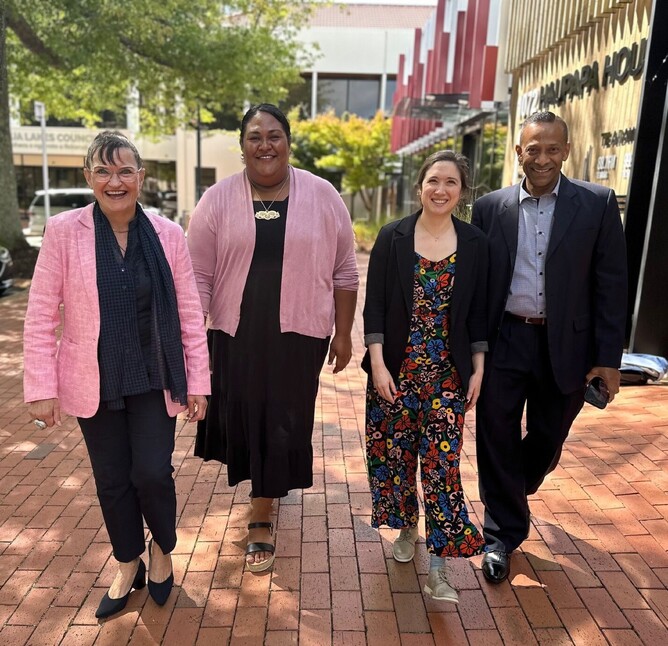Jude Pani, Kayla Christiansen, Christina Pope and Rajind Seneviratne
Te Tatau o Te Arawa (TTOTA) reaffirmed its dedication to fostering inclusive and vibrant communities through collaboration under the Welcoming Communities Project.
TTOTA executive assistant Kayla Christiansen and manahautū Jude Pani met with Kaea Whakarāhiri Hapori (Welcoming Communities) coordinator Rajind Seneviratne, and Welcoming International’s senior director of Welcoming America Christina Pope this week.
Based in St. Louis, Missouri, Christina shared her extensive experience in community engagement, particularly in partnering with migrant communities across the United States. She provided valuable insights into strategies aimed at deepening connections between local governments and migrant populations.
"We've been very inspired having learned about the partnership between iwi and council. This is really important as a model, understanding how charitable trust functions in Aotearoa so that we can consider a similar type of model in our work, and also share with our global partners," says Christina.
Te Tatau o Te Arawa recently received additional funding from Immigration New Zealand following the successful delivery of the Welcoming Communities Project, a settlement programme in partnership with Rotorua Lakes Council and Rotorua Multi-Cultural Council.
“It aligns with the Te Arawa 2050 Vision and our board's strategic plan. Our partnership with local government is unique, allowing us to connect communities effectively. The grant reflects the confidence placed in Te Tatau o Te Arawa's ability to effect positive change and foster inclusive environments,” says Kayla.
She explains that plans for the upcoming year include the launch of focus groups centred around marae-based suburbs, serving as forums for dialogue and relationship-building among members of the iwi, ahi kā, and migrant communities.
"Our migrant community is rapidly expanding, and with demographic projections indicating a future where New Zealand is significantly ethnically diverse, we must anticipate and prepare for these changes.
“Regardless of the demographic shifts, our mana whenua status remains unchanged. Therefore, it's essential to envision what we want our communities to resemble and devise strategies to encourage engagement with the marae,” she says.
Kayla emphasises the opportunities to effect enduring change and create a sense of belonging for Rotorua’s migrant community.
“If they can feel like they’re a part of the marae, then they’re more inclined to protect that and support kaupapa that are important to us as well, which we’ve seen with Tangata Tiriti. They’re already accepting of our culture because there are similarities and shared experiences, but many Māori may not understand that.
"We're inspired by successful initiatives in St. Louis and other indigenous communities in the United States. We see the potential for integrating migrant communities into shared cultural practices, such as communal maara kai,” says Kayla.
The meeting concluded with a renewed commitment to collaborative action, as Te Tatau o Te Arawa leverages its unique partnership with the Council to create a sense of belonging and cultural cohesion within the migrant community.

